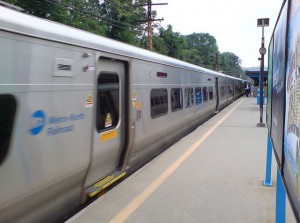I would like to take a moment to disclose a secretive piece of advice to you. Are you listening? Okay good. Giving back doesn’t have to involve working with an organization. Now I know you’re thinking, okay cool Sam, thanks for making me read all these articles on different organizations that don’t even matter. Well don’t think that. They do, but there are so many different ways to give back and help mankind. Use your own brain to think of creative outlets to show love every day in the city that never sleeps. But as always, if you need some inspiration, here are some ideas from other students.
In 2000, the movie Pay It Forward impacted and challenged viewers to realize the importance and effectiveness of doing good deeds for three people, without expecting anything in return. Although viewers were inspired, this challenge was forgotten once the business of life was piled on them. Don’t let this happen to you. Bring it back! As a person who is addicted to caffeine, I need my coffee fix every time I venture into the city, and maybe you feel the same way. The long lines never bother us as we wait for our delicious treat. But maybe instead of using our racked up Starbucks rewards for ourselves, lets “pay it forward” and use it for the person behind us in line. They don’t need to know it was you, as you slip past them with your coffee in hand and out into the city. The point is to help someone in a little way, that can change his or her whole day. Upsizing from a tall to a grande can change my mood enough. Now, if it was magically paid for, wooaaaah, even better.

"I see dead people"....no wait, wrong movie.
Wanna help your friends first before diving into helping others? Okay fine. Invite over friends or coworkers to your place for a homemade dinner. It’s a generous way to show them that you care. I mean forget cooking for them, the fact you clean up your house for visitors is a loving sacrifice in itself, am I right? A good meal and great conversation is a perfect way to show you care for your fellow NYC friends.
When I was living in Florida the summers were hot, like super hot, like no one should EVER vacation in Florida when it’s August because you gunna melt. So whenever I saw the Homeless Voice newspaper on the side of the road asking for donations I always felt bad that for 8 hours of work they may only have one drink with them. I began buying water bottles and tried giving them out every day on my way to school. In fact one guy saw me so much he called me “water bottle girl”, I guess I forgot to ever tell him my name. Other than the one time I learned, after giving out some water bottles I left in the car, that the water can become toxic once the plastic overheated, and freaked out that I could be the reason of death to homeless people in south Florida, it was pretty much a success. I mean who doesn’t want free water on a hot day?
Because I was handing out water bottles multiple times a week, I saw the same workers for the Homeless Voice every day. This allowed me to spark short stopped-at-a-red-light conversation with them. You never know what you can learn about someone until you speak up. Who knows, I might have been the only one to say something more than a “no thank you”, out the window of the car, or a sympathetic nod. So why not try it yourself. You don’t need to seek out the scariest homeless person in the neighborhood, or go into strange areas to do this, just be aware of who you see every day on your commute. More often than not, you see someone that could use your help. Be creative in how you can help them, whether it’s a water bottle in the summer or coffee in the winter, you can always reach out on your own and help one relationship at a time.

One of these water bottles is good, one is toxic. You would think it's the fallen one, but no! It could be either, dun dun DUN!
Think outside of the box! Can you knit scarves? Do you have some extra coupons at a burger joint? There are so many ways to give back that don’t require you to serve in an organization. Start now!
———————————————————————————————————
Follow the Campus Clipper on Twitter and Like us on Facebook!
Interested in more deals for students? Sign up for our bi-weekly newsletter to get the latest in student discounts and promotions and follow our Tumblr and Pinterest. For savings on-the-go, download our printable coupon e-book!

















